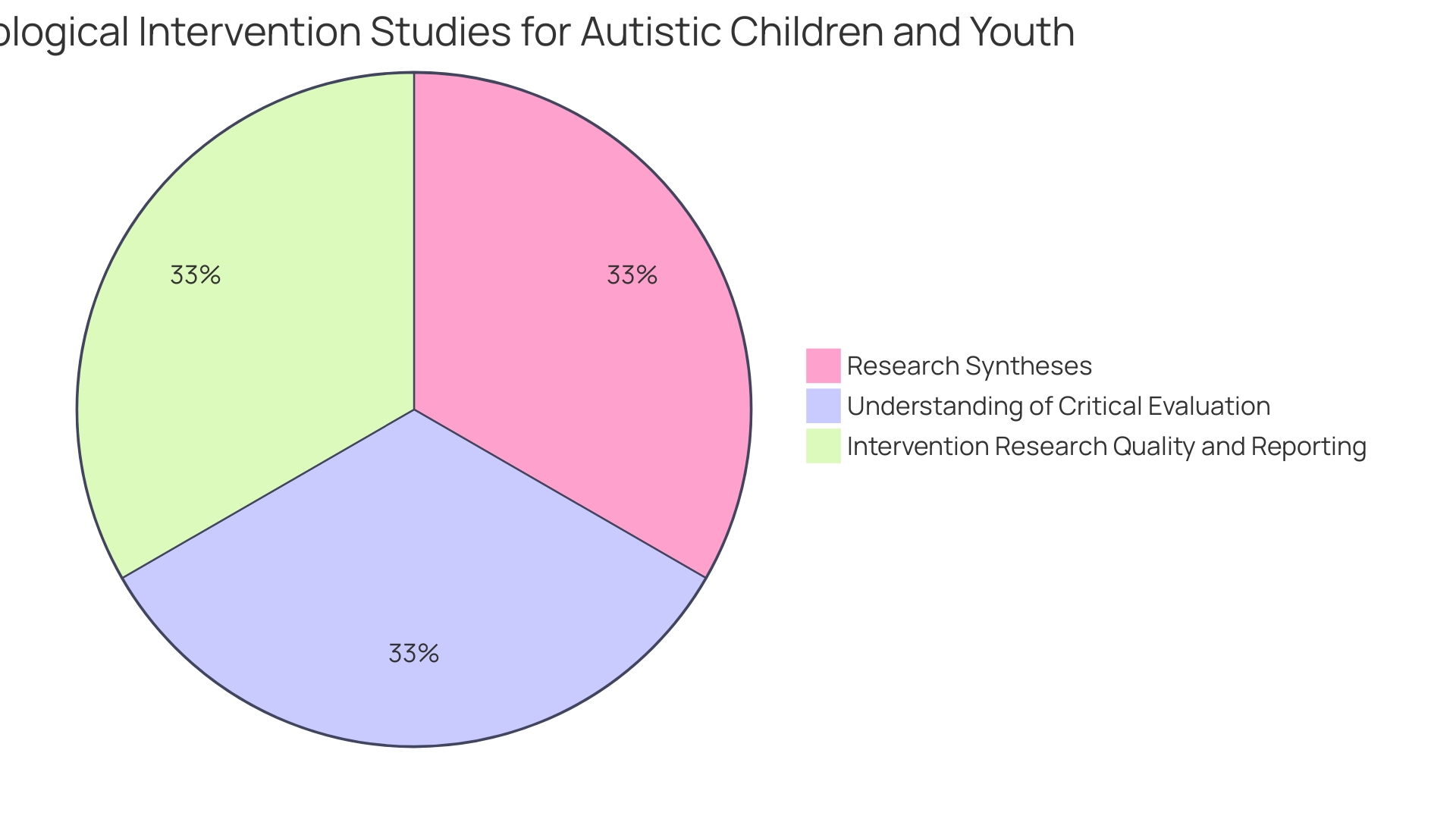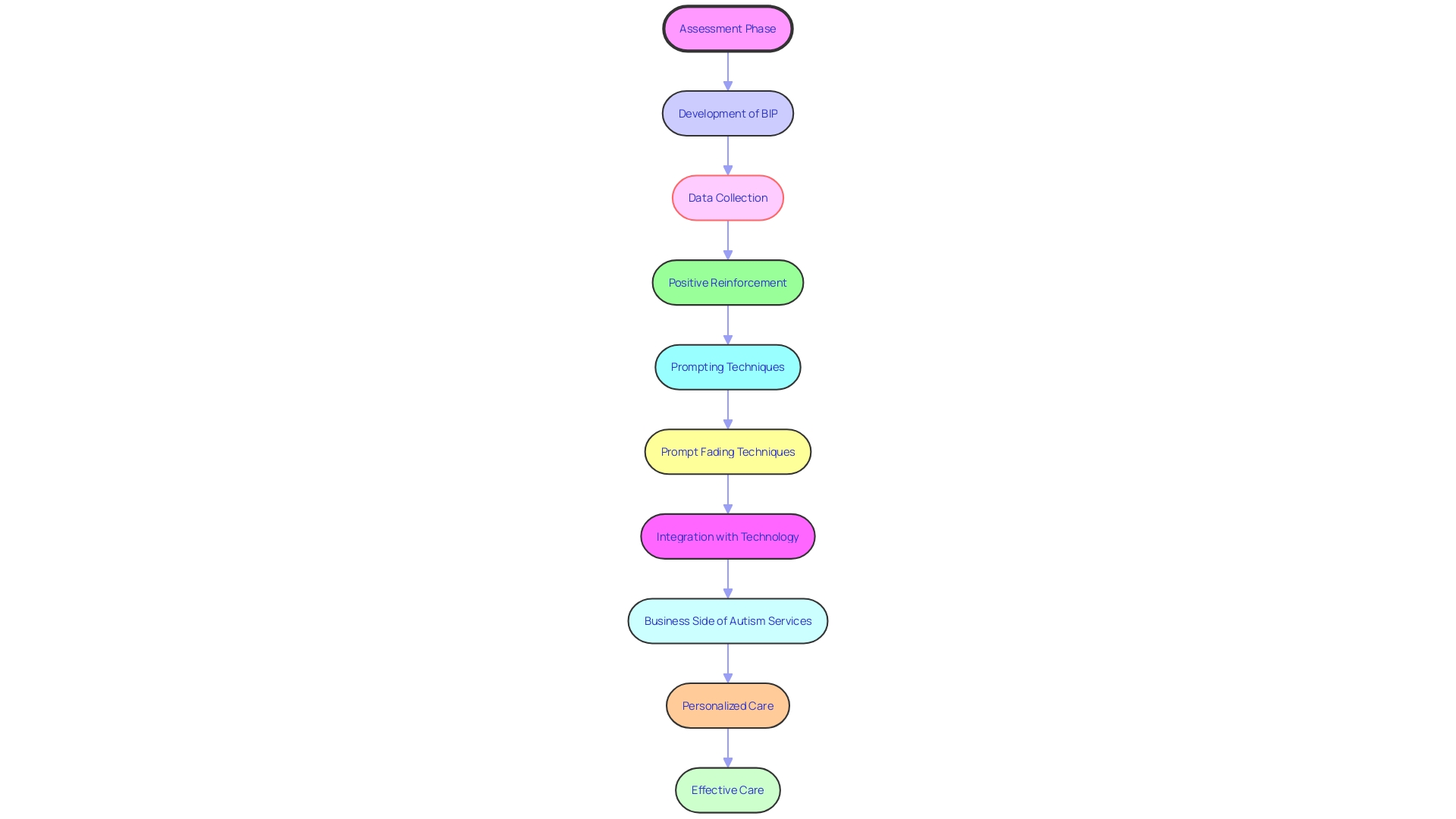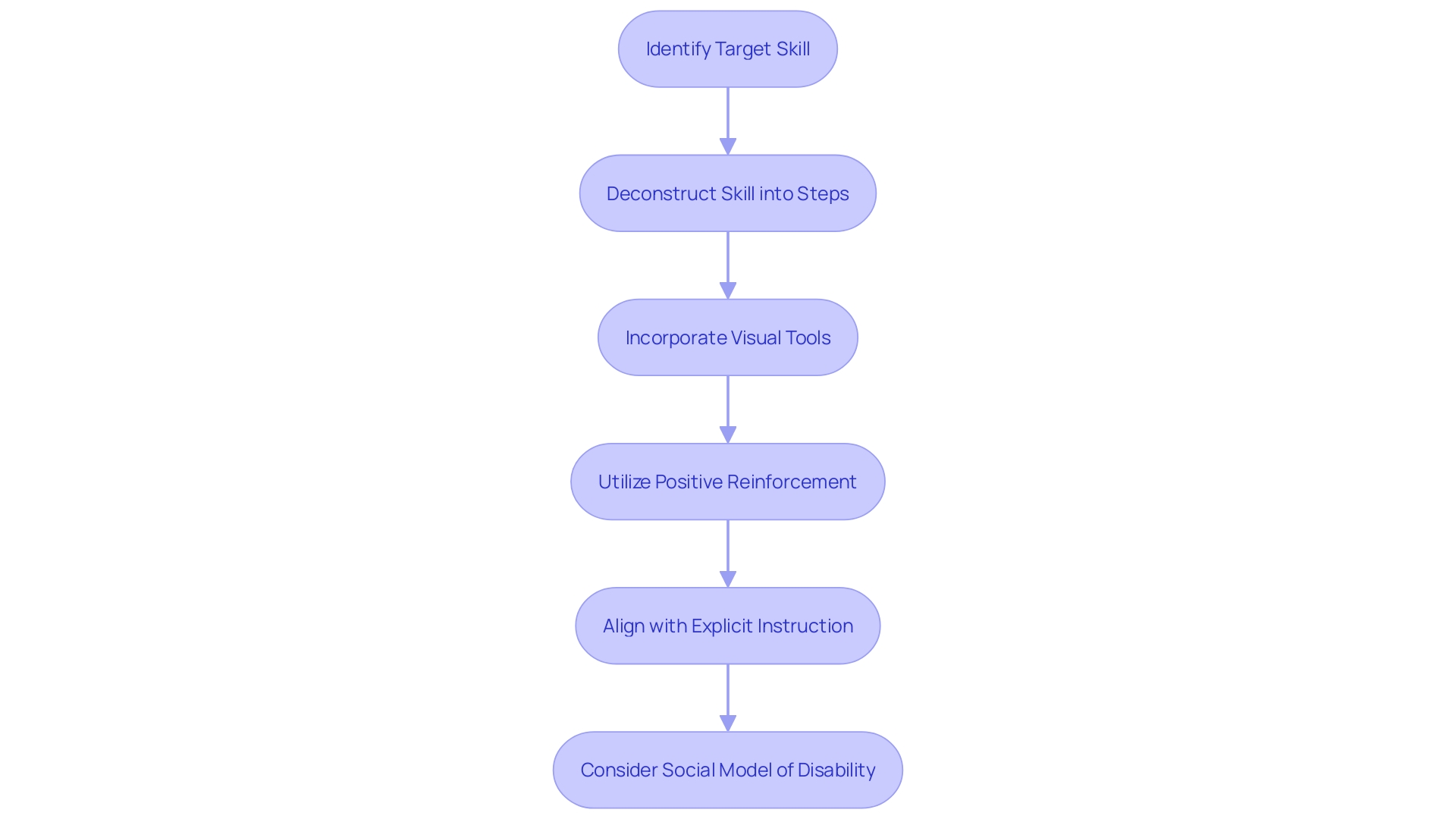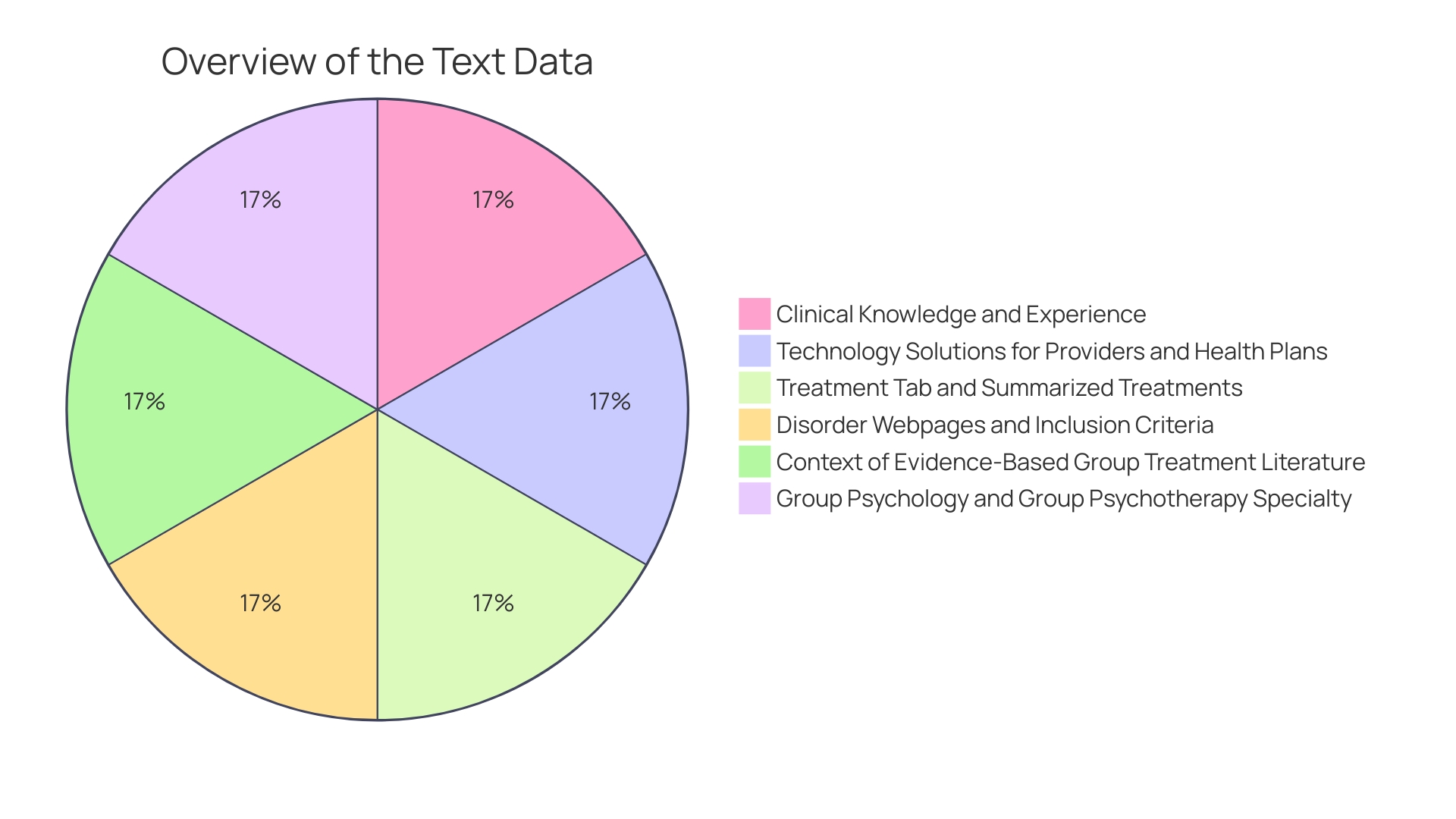Introduction
Applied Behavior Analysis (ABA) Therapy is a well-established, evidence-based method focused on enhancing positive behaviors and attenuating challenges in individuals, particularly those with autism spectrum disorder (ASD). This therapeutic strategy hinges on the principles of learning theory, aiming to foster skill development and life quality enhancement for those on the spectrum. Recent shifts in autism research methodologies underscore the progressive nature of ABA interventions, with randomized controlled trials now establishing the effectiveness of treatments like ABA.
In light of these advancements, the Council of Autism Service Providers has introduced new ABA Practice Guidelines, emphasizing the ongoing refinement of this crucial therapy. Statistics highlight the necessity of high-quality research to discern the true efficacy and potential drawbacks of interventions. Through this lens of continuous improvement and respect for individuals with autism, ABA Therapy stands as a beacon of hope, offering a structured, personalized path to progress for those it serves.
What is ABA Therapy?
Applied Behavior Analysis (ABA) Therapy is a well-established, evidence-based method focused on enhancing positive behaviors and attenuating challenges in individuals, particularly those with autism spectrum disorder (ASD). This therapeutic strategy hinges on the principles of learning theory, aiming to foster skill development and life quality enhancement for those on the spectrum. A Board-Certified Behavior Analyst with over ten years of clinical experience emphasizes the critical role of ABA in coordinating high-quality care, underscored by the latest technology solutions for both care providers and health plans to streamline processes and uphold best practices.
Recent shifts in autism research methodologies underscore the progressive nature of ABA interventions. Where quasi-experimental studies once prevailed, the field now increasingly relies on randomized controlled trials to establish the effectiveness of treatments like ABA, ensuring a rigorous standard of proof. In light of such advancements, the Council of Autism Service Providers has introduced new ABA Practice Guidelines, a testament to the ongoing refinement of this crucial therapy.
Statistics highlight the necessity of high-quality research to discern the true efficacy and potential drawbacks of interventions. Syntheses of nonpharmacological intervention studies for autistic children and youth reveal that many research efforts suffer from design flaws, underscoring the need for meticulous evaluation. This scrutiny is not only critical for the autism community but also serves as a beacon for other populations in need of developmental support.
It's through this lens of continuous improvement and respect for individuals with autism that ABA Therapy stands as a beacon of hope, offering a structured, personalized path to progress for those it serves.

Benefits of ABA Therapy for Autism
Applied Behavior Analysis (ABA) Therapy is a transformative approach that enhances the lives of individuals with autism by fostering essential life skills. This therapy is tailored to teach practical abilities such as effective communication, social engagement, self-care, and academic competencies. Through ABA Therapy, complex behaviors are deconstructed into smaller, achievable actions, enabling individuals to master new skills and apply them in various environments and contexts.
Recent updates to the ABA Practice Guidelines by the Council of Autism Service Providers underscore the necessity of high-quality implementation for the treatment's success. This reflects an evolving landscape where the understanding of autism broadens, acknowledging the diverse needs and capabilities of individuals on the spectrum. As such, ABA interventions are continuously refined to address the nuanced spectrum of autism, with experts contributing over a decade of clinical knowledge to ensure coordinated care and the adoption of best practices.
This dedication to progress is evident in the integration of technology in ABA practices, enhancing the coordination of care among providers and health plans. The dynamic field of ABA Therapy is poised to adapt to the changing profiles of autism diagnosis, as highlighted by the increase in prevalence and a deeper comprehension of the condition. With the rise in demand for skilled professionals, innovative solutions like flexible work models have been introduced, attracting talent and ensuring that the highest standards of care are met for those receiving ABA Therapy.
Key Components of ABA Therapy
Applied Behavior Analysis (ABA) therapy is a structured, scientific approach designed to foster positive behavior change. It’s not a one-size-fits-all method; rather, it starts with a thorough assessment to understand an individual's unique strengths, needs, and behavioral patterns. This assessment is the bedrock upon which a tailored Behavior Intervention Plan (BIP) is built, setting clear goals and strategies for addressing behavioral challenges and nurturing the development of new skills.
To ensure the effectiveness of the therapy, meticulous data collection is imperative. This ongoing process involves recording the individual's performance to gauge the success of interventions and to guide necessary adjustments to the treatment plan. Central to ABA therapy is the concept of positive reinforcement, which rewards individuals for displaying desired behaviors, thus encouraging them to continue learning and practicing these new skills.
Another cornerstone of ABA therapy is the technique of prompting and subsequent prompt fading. This supports individuals in initiating a desired behavior, with the ultimate aim of reducing and eventually eliminating the prompts, thereby fostering independence and the generalization of skills across various settings.
The efficacy of ABA therapy is not only seen in clinical settings but also in its integration with technology. Professionals in the field, such as Board-Certified Behavior Analysts, are leveraging over a decade of clinical experience to enhance technology solutions that support providers and health plans. This ensures that high-quality, coordinated care is delivered effectively, reflecting best practices and facilitating a streamlined review process.
The landscape of ABA therapy is also being shaped by the business side of autism services, with companies seeing significant interest from private equity firms. Innovations in talent acquisition and work models, such as flexible hybrid frameworks, are emerging to attract and retain qualified professionals like Registered Behavior Technicians (RBTs) and BCBAs. These developments highlight the evolving nature of ABA therapy and its growing significance in delivering personalized, effective care.

Creating and Implementing ABA Instructional Activities
Developing and deploying instructional activities is a cornerstone of ABA Therapy, aimed at fostering specific skills and behaviors through a meticulously crafted approach. To effectively teach a new skill or behavior, begin by pinpointing precisely what needs to be learned, whether it's enhancing communication abilities or mastering daily life tasks. Then, deconstruct this target skill into incremental, digestible steps, simplifying the learning process and boosting comprehension.
Incorporate visual tools like charts and diagrams to clarify concepts and guide the instruction process. Communicate the activity's requirements with clarity and brevity, utilizing visual signals to reinforce verbal instructions when necessary. Through repeated exercises, solidify the learned behavior, progressively elevating the task's complexity in line with the individual's advancement.
Finally, remember the pivotal role of positive reinforcement and feedback. Acknowledging correct actions or attempts motivates continued effort and learning. As endorsed by experts in the field, such as a seasoned New York state-licensed and Board-Certified Behavior Analyst, technology can play a vital role in enhancing these instructional methods.
Furthermore, recent conferences have emphasized the importance of translating research into practical, real-world applications, ensuring that interventions like ABA are accessible and effective for all, including those facing social challenges.
The principles of ABA align with the established practices of Explicit Instruction, long recognized for its effectiveness in teaching individuals with disabilities. Research supports the use of Explicit Instruction across various learning domains, including reading, writing, and math, particularly for students with learning disabilities. The social model of disability further informs ABA practices, encouraging reflection and the evolution of support strategies for individuals with autism, recognizing disability as a product of social constructs rather than solely an individual impairment.

Using Digital Tools in ABA Therapy
Advancements in digital technology are revolutionizing the landscape of ABA Therapy, offering an array of tools to support individuals with autism and ADHD. These innovations are not just enhancing the therapy process but also bringing about transformative effects on learning and communication.
Data collection and analysis have been greatly optimized through digital tools. Automating these processes not only simplifies tracking progress but also empowers therapists and educators with the ability to make informed, data-driven decisions. For instance, a clinician's request for new technology undergoes an assessment by a Digital Service Team to ensure its security, appropriateness, and compliance, as part of a comprehensive evaluation process.
Visual supports like digital applications and software offer invaluable assistance. Whether it's through visual schedules or social stories, these tools help individuals with autism to better understand and navigate their daily routines and social environments. This is particularly beneficial during transitions, such as the move from a special school to a community-based setting, where maintaining familiarity and routine is crucial for easing the stress associated with change.
Communication aids have emerged as a lifeline for many. Digital devices such as tablets or speech-generating devices empower those with autism to express their thoughts and needs more effectively. The impact of these technologies can be profound, as they not only enhance learning experiences but also remove barriers, allowing individuals to concentrate on achieving their goals.
Lastly, interactive learning is brought to life through digital games and apps, making skill acquisition not just engaging but also fun. Innovative technologies, like the Meta Quest virtual reality platform, originally designed for athletes, are now being explored to improve concentration and academic performance in students with ADHD.
These digital tools not only uphold best practices and high-quality care but also facilitate coordinated care and streamlined review processes, as noted by a Board-Certified Behavior Analyst with extensive experience in the field. The integration of these technologies in ABA Therapy promises a more personalized, efficient, and impactful approach to support individuals with autism and ADHD in their developmental journeys.

Examples of ABA Therapy Goals
Applied Behavior Analysis (ABA) therapy is tailored to meet the unique needs of each individual, focusing on specific goals that enhance quality of life and foster independence. Key objectives within ABA therapy include:
- Enhancing Communication: Goals revolve around improving abilities to make requests, label surroundings, and partake in conversations, which are vital for interaction and self-expression.
- Social Skills Development: ABA works to nurture social interactions, such as sharing, turn-taking, and maintaining eye contact, which are essential for building relationships and community integration.
- Self-Help Proficiency: Key life skills like dressing, toileting, and personal hygiene are targeted to boost self-sufficiency and confidence.
- Behavioral Improvements: Strategies are implemented to decrease challenging behaviors, such as tantrums, self-injury, or aggressive actions, improving the individual's ability to navigate their environment positively.
- Academic Advancement: ABA supports the acquisition of foundational academic skills, including reading, writing, and mathematics, to facilitate educational success.
- Daily Living Independence: ABA aims to cultivate practical skills for daily living, such as cooking, cleaning, and using public transportation, which are crucial for independent living.
By focusing on these goals, ABA therapy empowers individuals with the tools they need to succeed in various aspects of life. Moreover, the emphasis on early intervention and social communication development, particularly joint attention, has been linked to improved language skills later in life, underscoring the importance of addressing these areas as signs of autism emerge. The approach is guided by a wealth of clinical knowledge and a dedication to best practices, ensuring high-quality, coordinated care that respects the dignity and potential of each person.
Early Intervention and Its Importance
Understanding the impact of starting Applied Behavior Analysis (ABA) Therapy during the early stages of a child's development is fundamental. Leveraging the inherent neuroplasticity of young brains, ABA Therapy initiated before the age of three can significantly enhance developmental trajectories. This early start allows for a pivotal opportunity to shape positive behavior patterns and foster critical learning skills.
A child's brain is most adaptable during these formative years, and timely intervention can optimize their potential for growth.
Recent guidelines from the Council of Autism Service Providers underline the importance of quality and best practice in ABA Therapy. With the release of the third edition of the ABA Practice Guidelines, there is now an established standard of care ensuring ABA is effectively implemented. These guidelines serve as a beacon, guiding providers and caregivers alike in delivering coordinated care that adheres to these high standards.
Moreover, the pursuit of equity in mental health and development for children with autism is akin to Dr. David (Dan) R. Offord's metaphor of a fair race. By recognizing the unique needs and strengths of each child, reducing stress, and empowering caregivers with the necessary resources, we can support the healthy development of children with disabilities. This approach aligns with the vision of experienced behavior analysts who advocate for technology solutions that facilitate high-quality, coordinated care.
They emphasize the essence of early intervention in ABA Therapy as a means to foster inclusive participation of autistic children in all aspects of life.
Clinical research continuously evolves, with randomized controlled trials now setting the gold standard for evaluating the efficacy of interventions like ABA Therapy. These rigorous studies showcase the effectiveness of early ABA Therapy interventions, contributing to the knowledge base that clinicians draw upon to make informed treatment choices. The ultimate goal remains to provide autistic children with the support they need to thrive in school, at home, and in their communities.
Strategies for Implementing ABA Therapy at Home
Fostering a child's independence and development through ABA Therapy at home not only complements professional care but also encourages skill generalization across various settings. Here's how to optimize ABA strategies in your home environment:
-
Consistency is Key: Align your home routine with the child's ABA goals. Consistent rules and rewards across home, school, and therapy sessions enhance learning and behavior modification.
-
Clear Communication: Engage in ongoing dialogue with the ABA therapist. Understanding therapy objectives and the child's progress ensures a unified approach to skill reinforcement at home.
-
Structured Spaces: Organize your home to support therapy goals. Designated areas for activities, clear routines, and visual aids all contribute to a conducive learning environment.
-
Visual Schedules: These tools can be invaluable for children with autism, offering predictability in daily routines, reducing stress, and fostering autonomy.
-
Positive Reinforcement: Celebrate and reward positive behaviors. Whether it's verbal praise, a token system, or tangible rewards, positive reinforcement motivates and encourages continued effort and learning.
-
Family Involvement: Encourage all family members to participate in the therapy process. A unified front helps maintain consistency and supports the child's ongoing progress.
By incorporating these strategies, informed by the expertise of professionals like a New York state-licensed and Board-Certified Behavior Analyst with significant clinical experience, you can create a nurturing environment that promotes best practices in care. This approach aligns with recent findings, suggesting that children fare better in settings where care is coordinated, high-quality, and tailored to meet their unique needs. Moreover, engaging the entire family in the therapy process echoes the ABA Center on Children and the Law's research, which highlights the positive impact of a supportive kin network on a child's behavioral and mental health outcomes.
Supporting Caregivers and Families
Empowering caregivers and families is pivotal in the delivery of ABA Therapy. To bolster this support, the following measures can be significantly beneficial:
-
Education and training: By providing education and training on ABA Therapy principles, caregivers and family members can become adept at reinforcing the child's behavioral development. This knowledge transfer is critical, as evidenced by the expertise of a New York state-licensed Board-Certified Behavior Analyst, who emphasizes the importance of best practices and coordinated care in treatment settings.
-
Emotional support: Creating a nurturing environment where caregivers can freely share their feelings and experiences is vital for their emotional well-being. It is akin to the ethos of Dr. David (Dan) R. Offord's vision of a fair 'race' for all children, suggesting that a supportive network can alleviate stress and promote mental health.
-
Community resources: Linking families with community resources can be a game-changer. Support groups and parent networks not only offer practical advice but also foster a community spirit, which aligns with the findings from the ABA Center on Children and the Law. Their research highlights the enhanced outcomes for children when caregivers have robust support systems.
-
Regular communication: Open lines of communication with caregivers ensure that they are informed and involved in the child's progress. This approach reflects the initiative taken by the Center for Autism and Related Disorders to adapt work models for BCBAs, acknowledging the importance of flexibility and responsiveness to the needs of professionals and, by extension, the families they support.
In essence, these strategies are not just about therapy for the child but also about nurturing the ecosystem around them, ensuring that each child's race through life is as fair and supported as possible.
Conclusion
ABA Therapy is a well-established, evidence-based method that enhances positive behaviors and improves the lives of individuals with autism spectrum disorder (ASD). Recent advancements in autism research methodologies, including randomized controlled trials, have solidified the effectiveness of ABA interventions. The Council of Autism Service Providers has introduced new ABA Practice Guidelines, emphasizing ongoing refinement.
High-quality research is essential to understand the true efficacy and potential drawbacks of interventions. ABA Therapy offers a structured, personalized path to progress for individuals with autism. It continuously improves and respects their unique needs and capabilities.
ABA Therapy involves thorough assessment, tailored intervention plans, meticulous data collection, positive reinforcement, and prompt fading. The integration of technology enhances coordination of care and ensures high-quality, personalized treatment.
Digital tools simplify data collection, provide visual supports, aid communication, and make learning engaging and fun. These tools uphold best practices and facilitate coordinated care for individuals with autism and ADHD.
ABA Therapy goals include enhancing communication, social skills, self-help proficiency, behavioral improvements, academic advancement, and daily living independence. Early intervention and social communication development are key focuses.
Implementing ABA Therapy at home complements professional care and encourages skill generalization. Consistency, clear communication, structured spaces, visual schedules, positive reinforcement, and family involvement optimize outcomes.
Empowering caregivers and families is pivotal. Education and training on ABA Therapy principles, emotional support, community resources, and regular communication provide comprehensive support.
In conclusion, ABA Therapy enhances positive behaviors and improves the lives of individuals with autism. Ongoing research and refinement ensure its effectiveness. ABA Therapy offers a structured, personalized approach that respects the unique needs and capabilities of individuals with autism.
With the integration of technology and caregiver empowerment, ABA Therapy paves the way for progress and a better quality of life.




